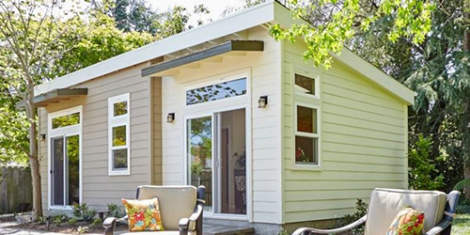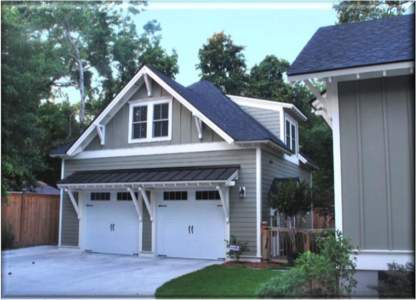The ADU Trend: Accessory Dwelling Units Rise in Popularity
Posted November 2, 2019 in Real Estate Trends
Many people are aware of the “tiny house” trend, but there’s an alternative housing solution that hasn’t gotten as much hype. Abbreviated as  ADU, an Accessory Dwelling Unit is usually slightly bigger than a tiny house but typically no bigger than 800 square feet, according to most zoning laws. These types of dwellings are not a new concept at all but more like a modern spin on the “granny flat” concept of a self-contained dwelling on the same property as the main house, with a separate entrance, kitchen, and full bath. The need for affordable housing, population density, and multigenerational living are some of the factors contributing to the growing popularity of ADUs. Local governments are getting on board with the ADU trend, passing measures that makes it easier for homeowners to build and rent out ADUs. With permits, cities make sure the units are safe and also capture property tax revenue.
ADU, an Accessory Dwelling Unit is usually slightly bigger than a tiny house but typically no bigger than 800 square feet, according to most zoning laws. These types of dwellings are not a new concept at all but more like a modern spin on the “granny flat” concept of a self-contained dwelling on the same property as the main house, with a separate entrance, kitchen, and full bath. The need for affordable housing, population density, and multigenerational living are some of the factors contributing to the growing popularity of ADUs. Local governments are getting on board with the ADU trend, passing measures that makes it easier for homeowners to build and rent out ADUs. With permits, cities make sure the units are safe and also capture property tax revenue.
Even if they can’t afford to build an ADU right away, homebuyers are considering ADU potential when viewing properties for a variety of reasons. Similar to extra living areas in a basement or above a garage, an ADU can serve several purposes. Grown children in various life transitions can live with their parents, and aging parents can live with their grown children—with more privacy, independence, and comfort for the whole family. Homeowners looking for another source of income can consider an ADU as a rental, or even make an ADU into their own smaller scale “dream home” and rent out the main house for way more than enough to cover the mortgage.
 From the outside, it’s typical for an ADU to look like a tiny version of the main house. Many homeowners prefer this and many cities require it, but it’s not always the case everywhere and cities are getting more relaxed on the rules as the trend grows. For the interior of an ADU there are many possibilities, with primary consideration on making the best use of space such as with an open room concept rather than hallways and enclosed areas. Also, vaulted ceilings and higher windows create a more spacious feel while allowing more natural light. Other space-saving tricks are recessed features and reach-in storage spaces instead of walk-in closets or mounted cabinets. Also, multipurpose rooms can maximize space, such as a laundry area in the kitchen.
From the outside, it’s typical for an ADU to look like a tiny version of the main house. Many homeowners prefer this and many cities require it, but it’s not always the case everywhere and cities are getting more relaxed on the rules as the trend grows. For the interior of an ADU there are many possibilities, with primary consideration on making the best use of space such as with an open room concept rather than hallways and enclosed areas. Also, vaulted ceilings and higher windows create a more spacious feel while allowing more natural light. Other space-saving tricks are recessed features and reach-in storage spaces instead of walk-in closets or mounted cabinets. Also, multipurpose rooms can maximize space, such as a laundry area in the kitchen.
Krista Cunningham
Columbian Advertising & Marketing Guru
Hobby Farmer & Country Girl